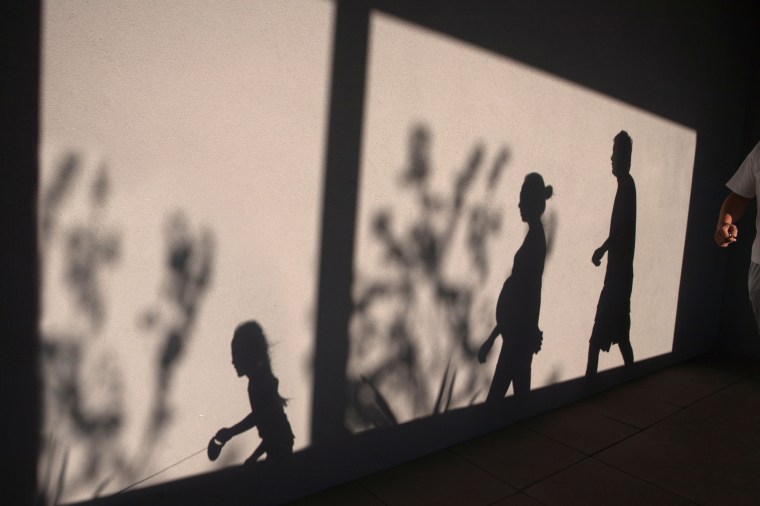Families are smaller and people are waiting longer to have children than in years past, according to an NBC News analysis of data released this week by the National Center for Health Statistics.
The U.S. teen birth rate hit a record low in 2019, the NCHS report shows, with fewer than 1.7 births per 100 teen girls ages 15 to 19. The teen birth rate has fallen sharply since 2007 amid a decadeslong pattern of decline, according to the report, but it’s still higher than the rates in many other high-income countries.
The overall fertility rate in the U.S. declined from 2015 to 2020, additional NCHS data shows, reaching a low of fewer than 6 births per 100 women ages 15 to 44. (The rate then rose 1% from 2020 to 2021, though the overall trend still faces downward.)
The U.S. birth rate — the number of births per 1,000 women — declined from 2018 to 2019 among women in their 20s and early 30s but increased among women ages 35 to 44, the report showed.
The data also revealed that from 2015 to 2019, 24 was the average age at which a woman gave birth to her first child, while the average man had his first at 27. In previous years, those averages were 23 for women and 25 for men.
Sociologists pointed to a few factors that may explain these trends. One is that contraception has become more reliable, while another is that people are getting married later in life, and most births in the U.S. still happen within marriage.
"People are waiting to have kids until they feel ready, they’ve got a good job, they feel mature enough to devote themselves to parenting, they feel like they’re going to have a good partner," said Karen Benjamin Guzzo, director of the Carolina Population Center at the University of North Carolina at Chapel Hill.
Another possible — though less influential — factor is medically assisted reproduction techniques, such as in vitro fertilization, which are helping some people have kids at older ages (primarily those with high incomes or coverage of the service as a benefit through their employer).
On average, people in the U.S. are also choosing to have fewer children, according to the NCHS report: In 2018, the average woman had around one biological child, compared to more than three in 1960.
The size of the average U.S. family — defined as people related by birth, marriage or adoption who live together — is now around three people, down from almost four in 1960.
Sociologists suggested these trends may be attributed, in large part, to financial concerns.
"The economic downturn of 2007-2008 really made people go, 'Wow, having a kid is a big commitment and expensive,'" said Julia McQuillan, a sociology professor at the University of Nebraska-Lincoln.
Guzzo said birth rates never fully recovered after the Great Recession, likely due to factors such as student loan debt, high housing prices and a shortage of full-time jobs. Child care costs and a lack of family leave may also lead people to postpone having kids or opt out of parenthood altogether, she said.
"The United States doesn’t have paid family leave. We have a really shaky child care system, as the pandemic pointed out. We don’t have sick leave for most people. So there’s a lot of things to consider before you decide to have kids in this environment," Guzzo said.
Fertility rates vary by region, though: States in the central U.S. have higher rates than in other parts of the country.
However, the Supreme Court’s decision to overturn Roe v. Wade, and the new abortion restrictions that have followed in many states, could influence U.S. fertility trends in the future, according to Michael Rendall, director of the Maryland Population Research Center.
"It could be that the overturning of Roe v. Wade will act against the continued decline in birth rate," he said.


